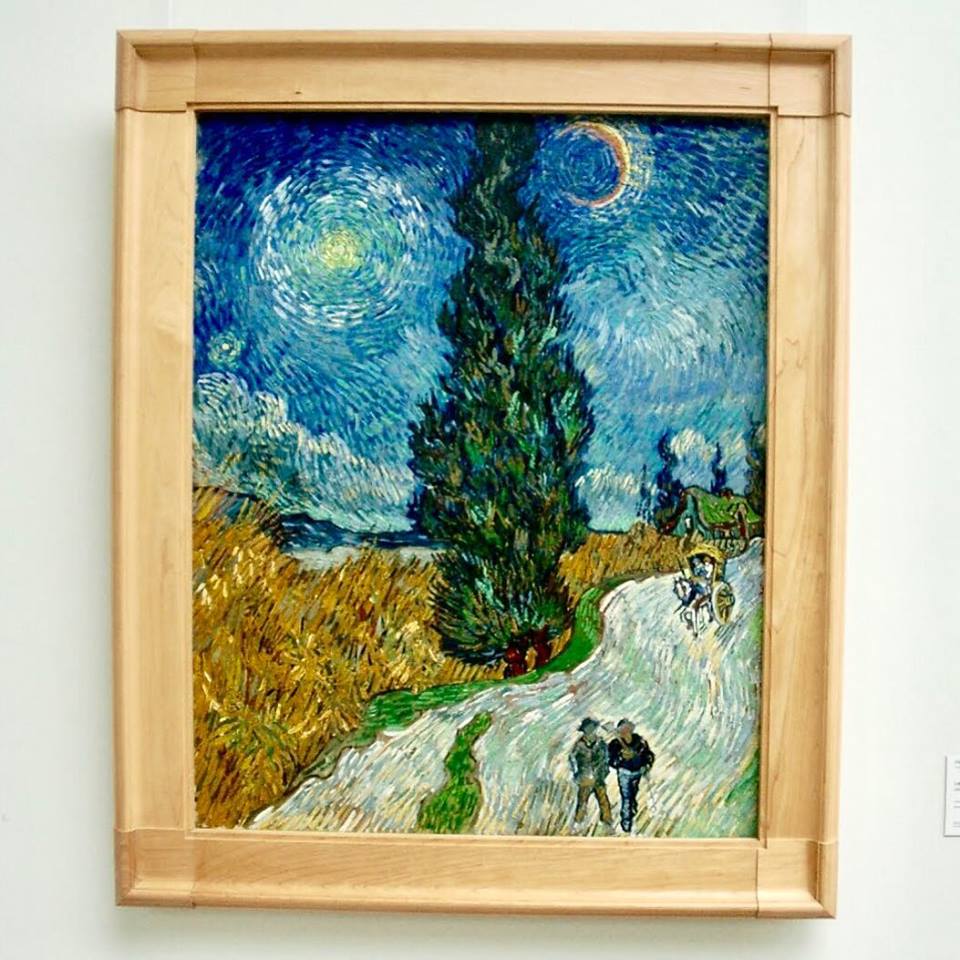For an art novice the film Loving Vincent is a dream come true

I rarely write about films as this blog is largely about travel. But I’m making an exception because for an art novice the film Loving Vincent is a dream come true. Several years ago, I was fortunate to visit the Van Gogh museum in Amsterdam. As I chanced upon Van Gogh’s withering sunflowers, I thought to myself, ‘that’s a really depressing picture’. I wondered why people were clamouring to take pictures of it and walked away soon after. Then I came across Van Gogh’s ‘Road with Cypress and Star’. I enjoyed the use of colour though I couldn’t really understand why a) the painting was so famous and b) why Van Gogh had portrayed the night sky in a seemingly haphazard whirl of brush strokes – it made me feel a tad giddy.

I enjoy realism paintings – landscapes of the European country side, fight and party scenes and portraits of peasants depicted in these paintings (of a milk-maid, a farmer etc). But impressionism was something new. For instance, Van Gogh’s paintings appeared to be blurred out; I couldn’t see details of the wheat fields, only strong brush strokes depicting the stalks of wheat and a tumultuous sky.
According to some reading I’ve done on impressionist paintings, light and movement are the focus of this movement. It’s not based on real-life details of the scene, but the impression of what the artist has of it. The paintings are meant to convey a certain type of emotion.
https://www.youtube.com/watch?v=f0oHf_yoQec&t=8s
Loving Vincent’s plot is simple, and perhaps, that’s why it may not fare well in the eyes of renowned film critics. It focuses on the son of a postmaster (a friend of Van Gogh’s) who travels to Paris to deliver a letter from Van Gogh to his brother Theo (Theo has since passed on). The son later travels to Auvers-sur-Oise to pass the letter to Dr. Gachet instead. He finds eye-witness accounts of Van Gogh’s death suspicious, and attempts to find out if Van Gogh’s death was indeed a suicide.
The brilliance of this film lies in its hand-painted scenes; the work of over 100 artists. The transition of these scenes are beautiful, and so is the movement of specific characters, well conveyed through a two-dimensional oil painted canvas. One could argue that an elaborate plot may not be necessary for a film like this.
For me, Loving Vincent brought out movement in Van Gogh’s paintings through animated brush-strokes. In the depiction of wheat fields, the sky and street lamps, I could feel the stalks of wheat moving in the wind and the light from street lamps flickering in the distance. It’s quite a beautiful feeling. I enjoyed it when there was a zooming out effect and the characters become smaller and indistinct as part of the landscape, like how people are depicted in impressionist paintings.
In my view, one of the best parts of the film was the depiction of water in a flashback scene, of Vincent contemplating his reflection in a washbasin, only to have it irreparably disrupted; and how the scene seamlessly transited to one of light streaming through the window of a staircase leading to his room.
Loving Vincent is a dream come true because for years, I’ve stood in front of these great impressionist masterpieces, wondering what was the context in which they were created. What was the scene back then? What was the artist trying to convey? I always wondered whimsically, how great if these paintings could come to life – and they did so through this film.
[Afternote: I’ll leave you with a soundtrack dedicated to Vincent Van Gogh – Starry Starry Night by Don Mclean. The lyrics sums up his life – ‘How you suffered for your sanity, How you tried to set them free. They would not listen. They did not know how. Perhaps they’ll listen now.’]

Leave a Reply